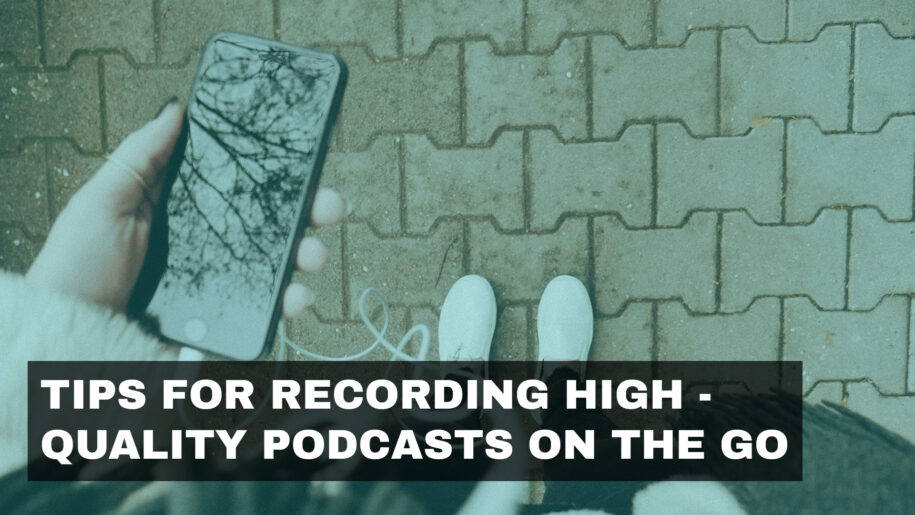Recording high-quality podcasts while on the go can be challenging due to varying environments and limited access to professional equipment. However, with the right strategies and tools, you can produce excellent content from virtually anywhere. Here are some essential tips for recording high-quality podcasts on the go.
1. Invest in Portable Equipment
High-Quality Microphone
Invest in a good portable microphone that is known for its sound quality and durability. USB microphones like the Audio-Technica ATR2100x or portable condenser microphones like the Rode NT-USB Mini are excellent choices.
Portable Audio Recorder
Consider using a portable audio recorder such as the Zoom H4n Pro or Tascam DR-40X. These devices offer high-quality recording capabilities and are ideal for on-the-go podcasting.
Headphones
Bring along a reliable pair of headphones to monitor your recordings in real-time. Over-ear headphones like the Audio-Technica ATH-M50x provide excellent sound isolation and quality.
2. Optimize Your Recording Environment
Choose a Quiet Location
Select a location with minimal background noise. Avoid areas with heavy traffic, loud machinery, or crowded places. If recording indoors, close windows and doors to reduce external sounds.
Use Sound Dampening Techniques
Carry portable soundproofing materials such as foam panels or blankets to minimize echo and reverb. Setting up a small recording space using these materials can significantly improve audio quality.
Mind the Weather
If recording outdoors, be mindful of weather conditions. Wind and rain can affect audio quality. Use a windscreen or foam cover on your microphone to reduce wind noise.
3. Prepare Your Equipment
Charge Batteries
Ensure all your recording equipment is fully charged before heading out. Carry extra batteries or portable chargers to avoid interruptions during recording.
Test Your Setup
Perform a test recording to check the audio levels and sound quality. Adjust the microphone placement and recording settings as needed to achieve the best results.
Pack Extra Accessories
Bring along essential accessories like cables, memory cards, and adapters. These extras can be lifesavers if you encounter equipment issues on the go.
4. Record with the Right Settings
Set Proper Levels
Adjust your recording levels to avoid clipping or distortion. Aim for a recording level that peaks around -6dB to -3dB to ensure clear and balanced audio.
Use the Right Format
Record in a high-quality audio format such as WAV or FLAC. These formats preserve the audio quality better than compressed formats like MP3.
Monitor Your Audio
Regularly monitor your audio through headphones to catch any issues during the recording. This allows you to make immediate adjustments if necessary.
5. Plan and Organize Your Content
Outline Your Episodes
Prepare an outline or script for your podcast episodes to ensure a smooth flow and clear structure. This is especially important when recording on the go, as it helps you stay focused.
Manage Time Effectively
Keep track of your recording time to ensure you cover all necessary topics without rushing. Being mindful of time helps maintain the quality and coherence of your content.
Backup Your Recordings
Regularly backup your recordings to a secure location, such as a cloud storage service or an external hard drive. This prevents data loss and ensures you have access to your recordings from anywhere.
6. Post-Production Tips
Edit for Quality
Once you have your recordings, use audio editing software like Audacity or Adobe Audition to clean up the audio. Remove any background noise, adjust levels, and add any necessary effects or music.
Normalize Audio Levels
Normalize your audio levels to ensure consistent volume throughout the episode. This improves the listening experience and maintains professional quality.
Save Multiple Formats
Save your edited podcast in multiple formats, including a high-quality master copy and a compressed version for distribution. This ensures you have the best quality file for future use.
Conclusion
Recording high-quality podcasts on the go requires careful planning, the right equipment, and attention to detail. By investing in portable recording gear, optimizing your recording environment, and following best practices for recording and post-production, you can produce professional-sounding podcasts from virtually any location. Embrace the flexibility of on-the-go podcasting to create engaging and dynamic content that resonates with your audience.


